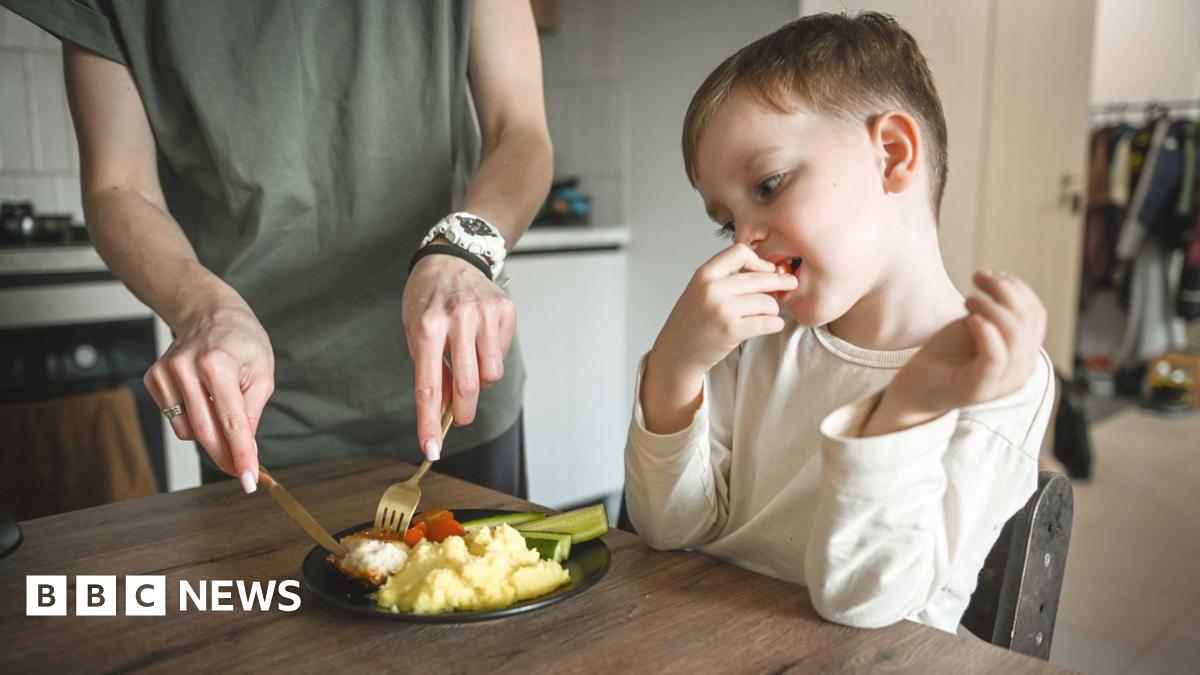Deadly Dinner: The Dangers Of Death Cap Mushrooms In Australia

Welcome to your ultimate source for breaking news, trending updates, and in-depth stories from around the world. Whether it's politics, technology, entertainment, sports, or lifestyle, we bring you real-time updates that keep you informed and ahead of the curve.
Our team works tirelessly to ensure you never miss a moment. From the latest developments in global events to the most talked-about topics on social media, our news platform is designed to deliver accurate and timely information, all in one place.
Stay in the know and join thousands of readers who trust us for reliable, up-to-date content. Explore our expertly curated articles and dive deeper into the stories that matter to you. Visit Best Website now and be part of the conversation. Don't miss out on the headlines that shape our world!
Table of Contents
Deadly Dinner: The Dangers of Death Cap Mushrooms in Australia
Australia's stunning natural landscapes are home to a diverse array of flora and fauna, but lurking amongst the beauty is a silent killer: the death cap mushroom (Amanita phalloides). This deceptively appealing fungus is responsible for the majority of fatal mushroom poisonings worldwide, and its presence in Australia is a serious cause for concern. This article explores the dangers of death cap mushrooms, how to identify them, and what to do if you suspect poisoning.
The Silent Threat: Identifying the Death Cap
The death cap mushroom's insidious nature lies in its resemblance to edible species. Its pale green, olive, or yellowish cap, along with its white gills and a distinctive volva (cup-like base), can easily be mistaken for other, safe mushrooms, particularly by inexperienced foragers. This is especially dangerous given its prevalence in certain parts of Australia, including:
- Victoria: Known for its significant populations of death cap mushrooms, particularly in areas with oak trees.
- South Australia: Similar to Victoria, oak trees are a common habitat.
- New South Wales: Emerging populations are being reported with increasing frequency.
- Tasmania: While less prevalent, sightings have been reported, underscoring the need for vigilance across the country.
Why are Death Caps so Deadly?
The danger isn't just in the mushroom's appearance; it's in its potent toxins. Death cap mushrooms contain amatoxins, which severely damage the liver and kidneys. Symptoms may not appear for several hours after ingestion, leading to a delay in treatment that can be fatal. These symptoms can include:
- Initial symptoms (6-24 hours): Nausea, vomiting, abdominal cramps, and diarrhea.
- Later symptoms (24-72 hours): Liver and kidney failure, jaundice, and potential coma.
What to do if you suspect Death Cap Poisoning:
- Immediate Action is Crucial: If you suspect someone has ingested a death cap mushroom, seek immediate medical attention. Call 000 (emergency services) or the Poisons Information Centre on 13 11 26.
- Preserve the Mushroom: If possible, collect a sample of the mushroom for identification. This helps medical professionals administer the correct treatment.
- Follow Medical Advice: Treatment typically involves supportive care, including managing symptoms and preventing organ damage. There is no specific antidote for amatoxin poisoning, highlighting the critical importance of early intervention.
Prevention is Key: Education and Awareness
The best way to avoid death cap poisoning is through education and awareness. Never consume wild mushrooms unless you are absolutely certain of their identity. Even experienced foragers can make mistakes. Several resources are available to help educate the public, including:
- Local Mycological Societies: These groups often host workshops and provide valuable information on mushroom identification.
- Online Resources: Reputable websites and books can offer detailed information on identifying poisonous mushrooms. However, rely on multiple credible sources before making any identifications.
- Caution Around Oak Trees: Be extra vigilant when foraging near oak trees, as these are a common habitat for death cap mushrooms.
The beauty of the Australian bush should not come at the cost of lives. By being informed and exercising caution, we can minimize the risk of death cap mushroom poisonings and protect ourselves and our loved ones. Remember, when in doubt, leave it out! Always err on the side of caution when it comes to wild mushrooms.

Thank you for visiting our website, your trusted source for the latest updates and in-depth coverage on Deadly Dinner: The Dangers Of Death Cap Mushrooms In Australia. We're committed to keeping you informed with timely and accurate information to meet your curiosity and needs.
If you have any questions, suggestions, or feedback, we'd love to hear from you. Your insights are valuable to us and help us improve to serve you better. Feel free to reach out through our contact page.
Don't forget to bookmark our website and check back regularly for the latest headlines and trending topics. See you next time, and thank you for being part of our growing community!
Featured Posts
-
 Sean Combs Rape Case Jane Doe Testifies Details Emerge
Jun 08, 2025
Sean Combs Rape Case Jane Doe Testifies Details Emerge
Jun 08, 2025 -
 American Airlines Plane Too Large For Landing Passengers Stuck For 8 Hours
Jun 08, 2025
American Airlines Plane Too Large For Landing Passengers Stuck For 8 Hours
Jun 08, 2025 -
 Follow Live Louisville Vs Miami Baseball Super Regional Score And Tv Coverage
Jun 08, 2025
Follow Live Louisville Vs Miami Baseball Super Regional Score And Tv Coverage
Jun 08, 2025 -
 Arrests Announced In Major Finfluencer Regulatory Sweep
Jun 08, 2025
Arrests Announced In Major Finfluencer Regulatory Sweep
Jun 08, 2025 -
 Donde Ver El Partido Andorra Inglaterra Hoy Guia De Canales Y Plataformas
Jun 08, 2025
Donde Ver El Partido Andorra Inglaterra Hoy Guia De Canales Y Plataformas
Jun 08, 2025
Latest Posts
-
 The Charlie Kirk Debate Analyzing His Influence On Young Voters
Sep 14, 2025
The Charlie Kirk Debate Analyzing His Influence On Young Voters
Sep 14, 2025 -
 Charlie Kirks Enduring Influence A Look At His Political Legacy And Future
Sep 14, 2025
Charlie Kirks Enduring Influence A Look At His Political Legacy And Future
Sep 14, 2025 -
 Mealtime Mayhem Expert Guidance For Parents Of Fussy Eaters
Sep 14, 2025
Mealtime Mayhem Expert Guidance For Parents Of Fussy Eaters
Sep 14, 2025 -
 Charlie Kirk Examining The Controversies And Achievements Of A Young Conservative Leader
Sep 14, 2025
Charlie Kirk Examining The Controversies And Achievements Of A Young Conservative Leader
Sep 14, 2025 -
 Apple Tv Streams Fridays Mariners Game With Hometown Radio
Sep 14, 2025
Apple Tv Streams Fridays Mariners Game With Hometown Radio
Sep 14, 2025
